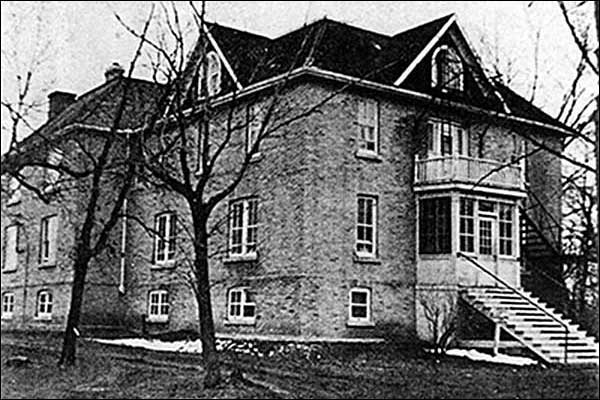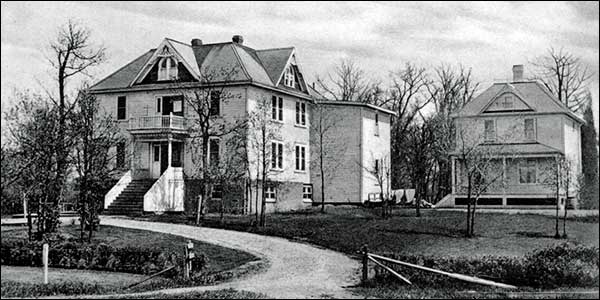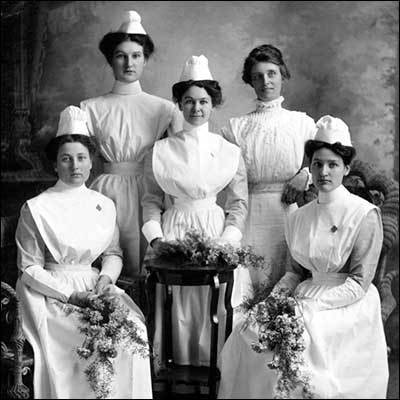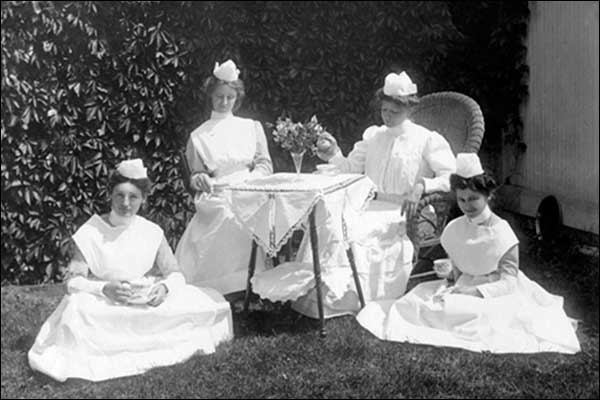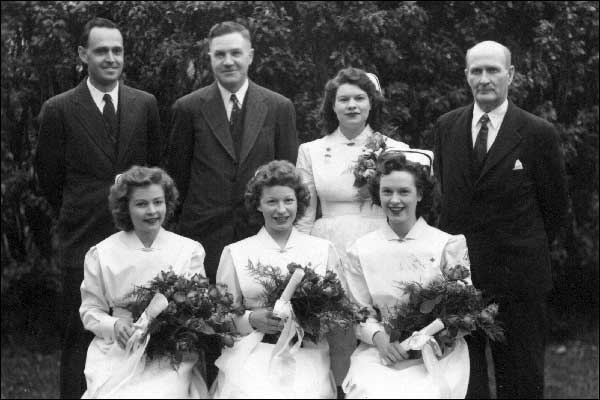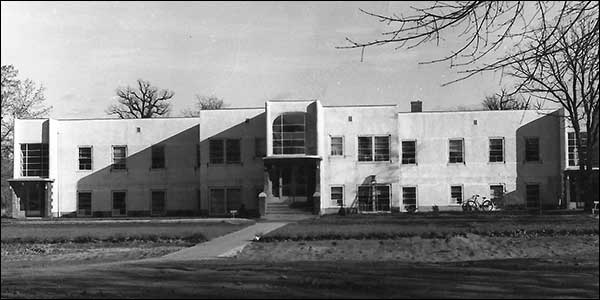Early Hospital Services
Early settlers cared for their ill and dying family members at home with the aid of basic home remedies and medications. In the years when the closest hospitals were in Winnipeg or Morden, accidents and communicable diseases such as smallpox and diphtheria took their toll. Private nursing homes, operated by trained nurses, provided care for many mothers and babies.
Carman was fortunate to have resident doctors from 1880 onward but it was not until 1905 that the first Carman hospital was opened for service to the community (The Dufferin Leader, Feb. 2, 1905, p.1). It was located on five acres of land on the east side of O’Brien Avenue (2nd St SE) facing Walnut Street (2nd Avenue SE) on the west and was a community effort. Local women took the initiative in organizing fund-raising and canvassing for the hospital which was built at a cost of $6,500. The frame structure was said to be ‘commodious and well-appointed’, with accommodation initially for ten patients. The building had a brick foundation and measured 36 feet by 36 feet in size, with two stories, a basement and attic and hot water heating. The main floor had an office, operating room, private room, bathroom and two general wards; the second floor contained the matron’s room, nurses’ rooms, housekeeper’s quarters and three private wards and a bathroom. Manoeuvering stretchers upstairs to the second floor was a challenge. The basement housed the kitchen, dining room, laundry, coal room and storage. Over the ensuing years, the Women’s Hospital Aid were a prime force in maintaining the hospital, providing furnishings, linens, food and other supplies through their dedicated fund-raising activities.
Early hospitals provided nursing care by establishing schools of nursing in which student nurses trained and worked under the supervision of a qualified registered nurse, the matron. Miss Venables, the first Matron and Head Nurse was hired at a salary of $40 per month. The Hospital offered training for nurses from 1905 until closure of the program in1947. During that time, over 120 nurses received training in a three year program. In 1911, a nurses’ home was built beside the hospital.
The hospital served a large community and was fully occupied. In 1919, an addition was made and by 1945, a new two-story hospital was planned. Built at a cost of $175,000, it had two operating rooms, a nursery, x-ray unit, forty-three beds and up-to-date equipment and safety features. Carman Memorial Hospital served the Town and surrounding municipalities until the 1982 when it was replaced by the present facility in the south-west end of town.
See also: The History of the R.M. of Dufferin in Manitoba, 1880–1980, pp. 254-257 and
The Dufferin Leader, Feb 2 1905, p.1 (access online through Pembina Manitou Archive)
September 2020
Carman Hospital. Among the photo collection from Bob Briggs were several snapshots taken by his grandmother Elsie Tucker who worked in the laundry at Carman Hospital in the 1950’s. His grandfather Bruce Tucker drove the ambulance. Most hospital pictures feature the buildings, doctors or nurses rather than the other staff members that help keep the hospital going.
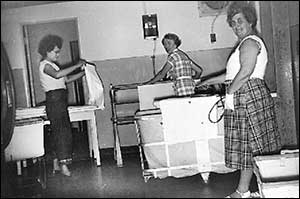
Carman Hospital laundry 1954
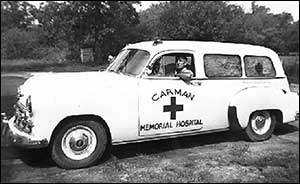
Carman Hospital ambulance 1950s- Bruce Tucker driver
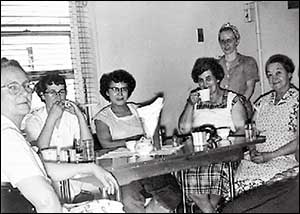
Carman Hospital staff on break 1954
May 2020
May 12th. This was the day Manitoba was supposed to be celebrating the 150th anniversary of our Province. All events have been cancelled because of COVID-19—including the long-planned unveiling of our Missouri Trail sign which was scheduled for the 12th. It will all take place in due course.
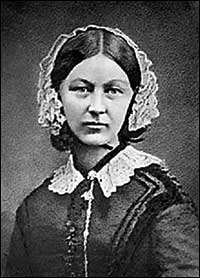
How appropriate though that this May 12, nurses around the world are placing candles in their windows to commemorate the 200th anniversary of the birth of Florence Nightingale and International Nurses’ Day. Nightingale’s service during the Crimean War and her image as “The Lady with the Lamp” captured the attention of the British public. She went on to establish the first school of Nursing, thereby laying the foundation for recognition of Nursing as a profession. The Founder of Nursing would be proud to see nurses still out there on the front line during the COVID-19 pandemic.
November 2015
Early Health Care. Our second e-mail communication was from a contact who was searching for her great-grandfather‘s grave. Francis “Frank” Jessop was one of the early, pre-1885 settlers in the Almassippi district north-west of present-day Carman. His obituary, which we located in The Carman Standard for July 24, 1894 (online through Pembina Manitou Archive), confirms the family’s understanding that he was buried in Carman Cemetery. Unfortunately, the grave doesn’t have a headstone nor does it appear on cemetery records. It’s been long suspected that the cemetery has early unmarked graves; now we know that this is likely the case, but we still have no clues to the exact location(s).
The obituary is of interest as well for the insight it provides into the life of our early settlers. Frank Jessop is described as a man “much liked by his neighbours for his kindly and generous nature” who had served as councillor in the Elm River area. When he came west in1881, his family remained in Ontario. Other families have reported finding the winters and living conditions too harsh to bring women and children west. Jessop’s farm was in an area known as locally as “Scrubtown”. The Dufferin history book (p. 38) describes it as an area with “heavy brush and a lot of scrub to be cleared”, other areas being “low and swampy”. Apparently the conditions affected Frank Jessop’s health and he was said to have been “suffering for three years from complications of diseases brought on by exposure when living on his own farm.” Since fall of the previous year, he had been unable to leave his house and for two months was confined to bed and cared for in the Peter Robertson home. Mrs. Robertson is credited with providing “unceasing care” and doing “all in human power could do to make his last days easier”, though he suffered from continual pain.
Stories like this provide some insight into the tremendous need for doctors, nurses and hospital care in settlements that were rapidly growing up across Manitoba. That is why the work of Eileen McGavin McIntyre’s grandfather, Dr. McGavin, and others like him still hold a special place in the histories of our community.
Growth of institutional care, of course, is only part of our health-care heritage. Some of us still remember when doctors made home visits. And, as seen in this ad from 1905, registered nurses also provided private duty care in patients’ homes or nursing homes.
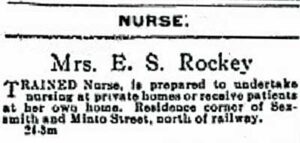
Ad in The Dufferin Leader Feb 2 1905
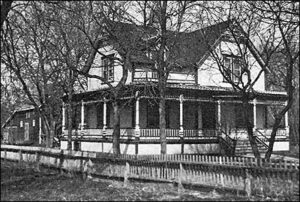
Mrs. Smith’s Nursing Home
During the 1930’s, Mrs. Smith’s Nursing Home in Carman was another of the nursing homes that offered care for the terminally ill as well as for birthing mothers (Valley Leader, March 27, 2009).
We’ll look some other time at Public Health, home care, personal care homes and other programs that are an equally important part of our health services heritage. But to come back to hospital care for a moment – it was just 40 years ago that the first hospital-based palliative care program began in Canada (at St. Boniface Hospital, 1975, under Dr. Paul Hentelef); the first unit was set up in Carman Hospital in 1995. What is striking about this ‘modern’ hospital program is how closely its underlying precepts (providing compassionate end-of-life care in a home-like setting open to family and friends) mirror the “unceasing care” Mrs. Robertson provided for Frank Jessop in her own home, while doing “all in human power to make his last days easier.” His obituary is a fitting tribute to Mrs. Robertson and other early settlers whose compassion and presence helped family and neighbours through their final days.
January 2014
Dr. A. McGavin
One of the first emails we received in response to our new website was from Eileen McGavin McIntyre, granddaughter of Dr. Andrew McGavin who practiced in Carman from 1911 until his death in 1948 while on call to the scene of an accident.

She also sent a poem her grandfather wrote about curling in Carman. The poem, titled Regarding “Fans” and Skips was written in February, 1936 and voices spectators’ views of the prowess of various skips and their teams. Dr. McGavin explains for the reader that “The “Fans” on the benches have all kinds of advice to give and one would think they knew the game better than anyone else. How often our forays into the past show us that some things never change!
Thanks to Eileen McIntyre for these and other anticipated gems from her collection. We are hoping to compile a booklet of Dr. McGavin’s poems about golfing, the hospital and other aspects of life in Carman. For more information on Dr. McGavin, see Memorable Manitobans: Andrew Edward McGavin (1876-1948).
Dr. McGavin in front of his office 1940.

